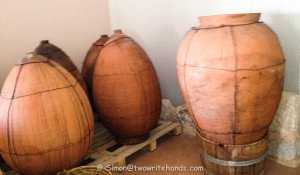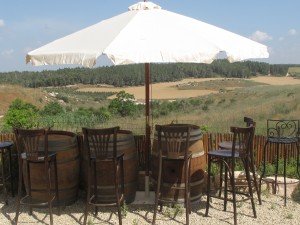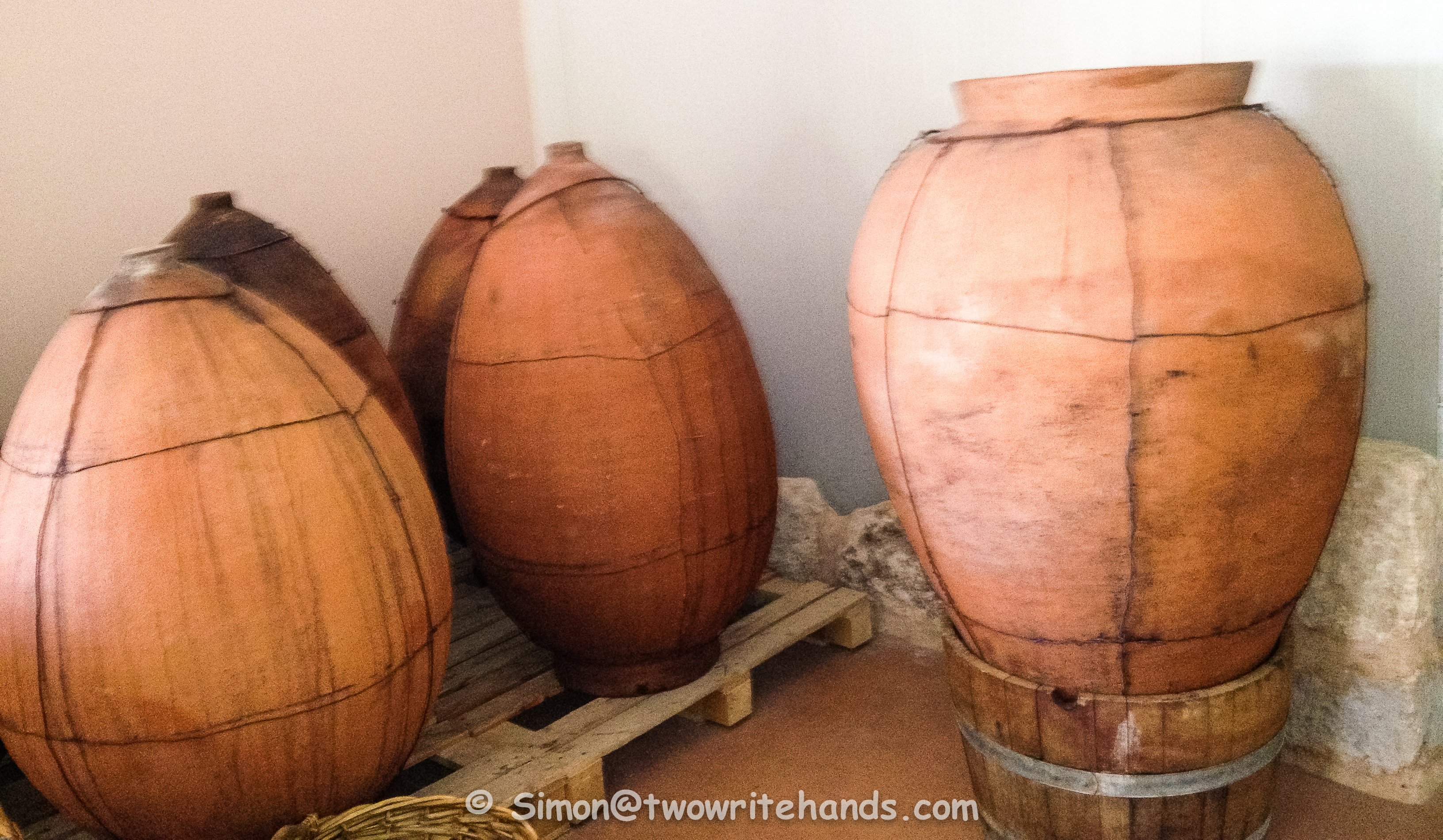An Ancient Fermentation Process Yields an Exceptional Experience for the Modern Palate
Our 2013 visit with my family in Israel held many wondrous experiences. One of several on our first day was a visit to the Kadma Winery in the heart of the Judean Hills, where the fermentation method, the owner and the wine all evoked WOW’s.

Amphorae at the Kadma Winery
Kadma uses amphorae (large clay vats) to ferment all its wine. This is an ancient process that is still popular in Eastern Europe. And now, it is growing in popularity in Israel.
Amphorae are handmade, fired in an open fireplace, then immediately lined with a layer of beeswax while the pots are still hot. The absorption of the beeswax into the pores seals the interior of the pots, providing a barrier of natural antiseptic properties that prevent the wine from harmful microbes, thus making use of any chemicals unnecessary.
Unlike stainless steel flat-bottom tanks, the shape of the amphorae helps to inhibit unwanted flavors and aromas from leeching into the wine.
The founder of this small family-run winery is Lina Slutzkin. Born in the Republic of Georgia, Lina enjoyed a successful 20 year career with Intel. But she heard another call. So Lina enrolled in the Soreq Wine Making School.
In 2010, Lina opened Kadma Winery in Israel. Combining her Georgian roots with her training in modern wine-making, she searched until she found one of the few remaining locations where traditional methods for making amphorae, handed down through generations for thousands of years, were still being employed.

View from the Patio at the Kadma Winery (photo credit – Kadma Winery)
The next step was to safely transport the robust, but still breakable amphorae from Georgia to Israel. No one would insure the precious cargo, so Lina made sure she was onsite to oversee the handling and packing of the amphorae before shipping.
Kadma Winery now has 20 of the earthenware amphorae, which result in the production of 10,000 liters (2,642 gallons) of wine at a time.
Traditionally, amphorae are buried in the ground up to their necks, allowing the wine to age. This method, however, simply doesn’t work in the warm, arid Israeli soil. At Kadma, the pots are stood in cool rooms, allowing better control of sanitation and temperature.
But what about the wine itself? We sampled a Merlot and a Cabernet Sauvignon. They were juicy, smooth and mellow with a satiny finish. In other words, one heck of a delicious WOW!.
Among the wines produced at Kadma are a semi sweet Chenin Blanc single variety Merlot, a dry Reserve, and a Port style wine.
Kadma Winery is located in Kefar Uriah, where vineyards existed and wine was made in ancient times. You can find the Kadma Winery about half way between Jerusalem and Tel Aviv.





So glad you enjoyed the post. Yes, Lina is a very interesting person, and we were fortunate to have had the opportunity to meet her and ample her delicious wine.
Although not a wine connoisseur, I’m interested in the different wine making style. The woman in charge sounds like someone interesting to sit and have a beer (or glass of wine) with.
Thanks for sharing another WOW moment.
We hope you had a safe journey to your current destination. 🙂